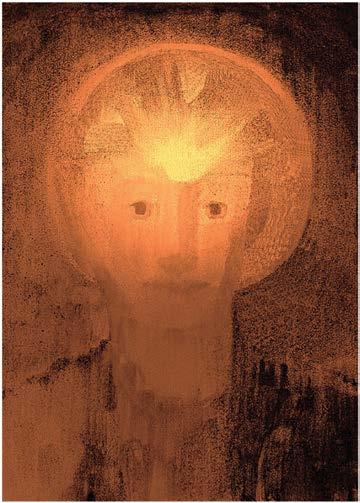
2 minute read
Anthroposophic Medicine Connects
Anthroposophic Medicine Worldwide
by Peter Hinderberger, MD
Anthroposophic medicine (AM) is practiced in 67 countries. The International Association of Anthroposophic Physicians’ Associations (IVAA) [ www.ivaa.info ] is the umbrella organization for anthroposophic medical associations worldwide. Its website offers very interesting information. At the general meeting in fall 2013 all continents except Africa were represented. Hispanic speaking countries had a strong presence: Spain, Argentina, Brazil, Chile, Columbia, Peru, Ecuador, and Cuba. For the first time we heard reports from Japan and Taiwan.
Anthroposophic medicine is clearly expanding outside Europe—where the number of anthroposophic physicians is shrinking as significantly more physicians are retiring than the number of young physicians.
The challenges include official recognition in different countries and availability of anthroposophic medical products (AMPs), which varies from country to country even within the European Union. In Germany and Switzerland AM is fully integrated in the medical care system and AMPs are readily available, whereas in Holland, with a respectable number of people who use anthroposophic medicine, the classical AMPs are not available and need to be ordered by patients from an international pharmacy in Germany. Only a few countries like Germany, Switzerland and New Zealand enjoy the unrestricted availability of Iscador, the mistletoe extract often used in cancer treatment.
Under the leadership of Michaela Glöckler of the medical section [ www.medsektion-goetheanum.org/en/ ] at the Goetheanum, educational and post-graduate training have become available not only in Europe but also worldwide. The International Postgraduate Medical Training (IPMT) was initiated in 2002. It is offered as a series of international annual course weeks for physicians and licensed prescribers. In 2014 IMPT sessions will be offered in sixteen countries: Argentina, Thailand, Philippines, Ukraine, USA, Malaysia, Australia, Taiwan, China, Russia, Czech Republic, Serbia, Peru, India, and Cuba. The international training seminars have also developed into valuable training opportunities for people from other healing professions, including therapists, nurses and pharmacists.
This is an exciting time for anthroposophic medicine. On one side AM is becoming more known and interest is definitely growing among physicians and consumers. On the other, the medico-legal and insurance world is becoming more standardized, which is directly in opposition to the individualized, human centered approach of AM.
Peter Hinderberger, MD, PhD, DIHom, is in practice at Ruscombe Mansion Community Health Center in Baltimore, Maryland.
Growing anthroposophic doctors & therapists
by Raphael Knauf, MD
We have started a small group of people at the beginning of their work in medicine who are interested in Anthroposophy and Anthroposophic Medicine. Our group currently includes nurses, therapists, resident physicians, medical students, a pharmacist and students of Naturopathy and Traditional Chinese Medicine. The main goals are to create a human connection with each other, provide a place to connect with Anthroposophic Medicine and to share questions, challenges and joys of our everyday work. We “meet” via conference call every one to three months, depending on people’s schedules. There are currently about twenty people on our email list; with everybody’s schedules being rather unrhythmic, our most recent calls were attended by four-to-seven people in various constellations. If interested or for more information, please contact Raphael.
Raphael Knauf, MD (raphael.knauf@gmail.com) is a resident physician at Middlesex Hospital in Middletown, CT, and formerly are resident at the Ita Wegman Klinik in Switzerland.










